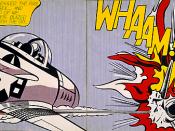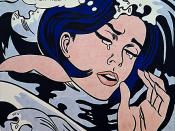The following five art movements have had an extensive impact during the C20th. They all connect somehow and have continuously grown from one another by their agreements and disagreements with the various movements.
Impressionism (1870-1910), was the first real art movement to occur during the C20th, also the first to break traditional conventions. Audiences resented the artworks because of their new concepts but eventually they became accepted throughout the world. Impressionism focused on revealing light, surface and the tone of color and what was noticed on the artist's immediate visual view of a scene at any particular time of day. Some artists that were involved with this movement were Claude Monet, Edgar Degas and Camille Pissaro.
Impressionism was a movement that painted reality while the Post-Impressionist constantly searched for new ways to express color. The Impressionist's limitations led to Post-Impressionism.
Post-Impressionism (1880-1920), mainly focused on bold compositions and patterns, expressing color, different perspectives, flat surface and strong outstanding line work.
Most of the artists that painted in this movement were French; they include Paul Cezanne, George Seurat and Paul Gaughin.
Post-Impressionism was a movement that was still too limited for the expressionist's likings and expectations. The Post-Impressionist's use of color eventually led to Expressionism which took the use of color into a more dramatic scene.
Expressionism evolved and was popular during 1890-1920, the movement revolved around vibrant colors, wild abstract shapes and emotional subject matter. It was seen and known as the most dramatic movement along with a touch of emotional sense added. Expressionist artists include Ernst Ludwig Kirchner, Edward Munch and Wassily Kandinsky.
Expressionism was a movement that preferred to depict emotion in an exaggerated mode yet was still able to bring up different responses through the situation of the artwork. While Cubism allowed their paintings to be...


